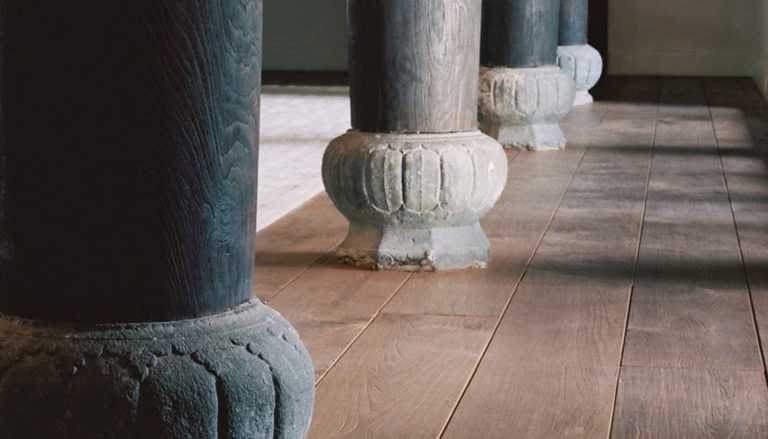IN THE TWO INTERNATIONALLY KNOWN LUXURY HOTELS of the architect — Tamarind Village and Rachamankha in Chiang Mai — many of the attributes of small courtyard houses are intertwined and explored at a larger scale. In these complexes, the sense of entering another world in the center of the old city is a conscious, specific intent. As in the private houses, these large projects convey privacy, though indeed they are very public as they are located in two of the busiest neighborhoods of the historic city. What had existed of the historic center is now dramatically changed by population expansion and unmonitored growth. As a consequence, these two hotels seem deeply alternative, yet timeless.
The detachment from a discordant environment is a function of the kinds of calming spaces found upon arrival at the inn and within its walls. The drive is edged with and shielded by high bamboo and is like a tunnel — the neighborhood is blocked out, as you enter a haven. The entry into the building complex itself — its form taken from Thai Lanna temple architecture of the mid nineteenth-century Ton Kwen Temple in Chiang Mai — is a long covered corridor that gently curves so the destination is obscured. This delayed resolution of entry, the hidden destination, is a tactic that heightens the experience through mystery and surprise, a well-known technique in mood-making that transcends historical period. Courtyards are employed again to center and organize groups of rooms and public spaces. A notable use of one is for the pool that seems less like a place of recreation than a watery rectangle that one might happen to swim in.
Economic demands for more than forty rooms necessitated a tightly organized plan, cleverly set into the site in ways that keeps the compactness from being apparent or insistent. In fact, the simplicity of the geometry and density of the plan is experienced as episodic and complex, full of surprises as one negotiates the covered walkways leading to the rooms. In a final gesture to link the composition to its city and culture, the architect insisted on keeping one edge of the main courtyard low so that one can clearly see the stupa of an adjacent temple.
Photography, Somkid Paimpiyachat, images 3, 4

















